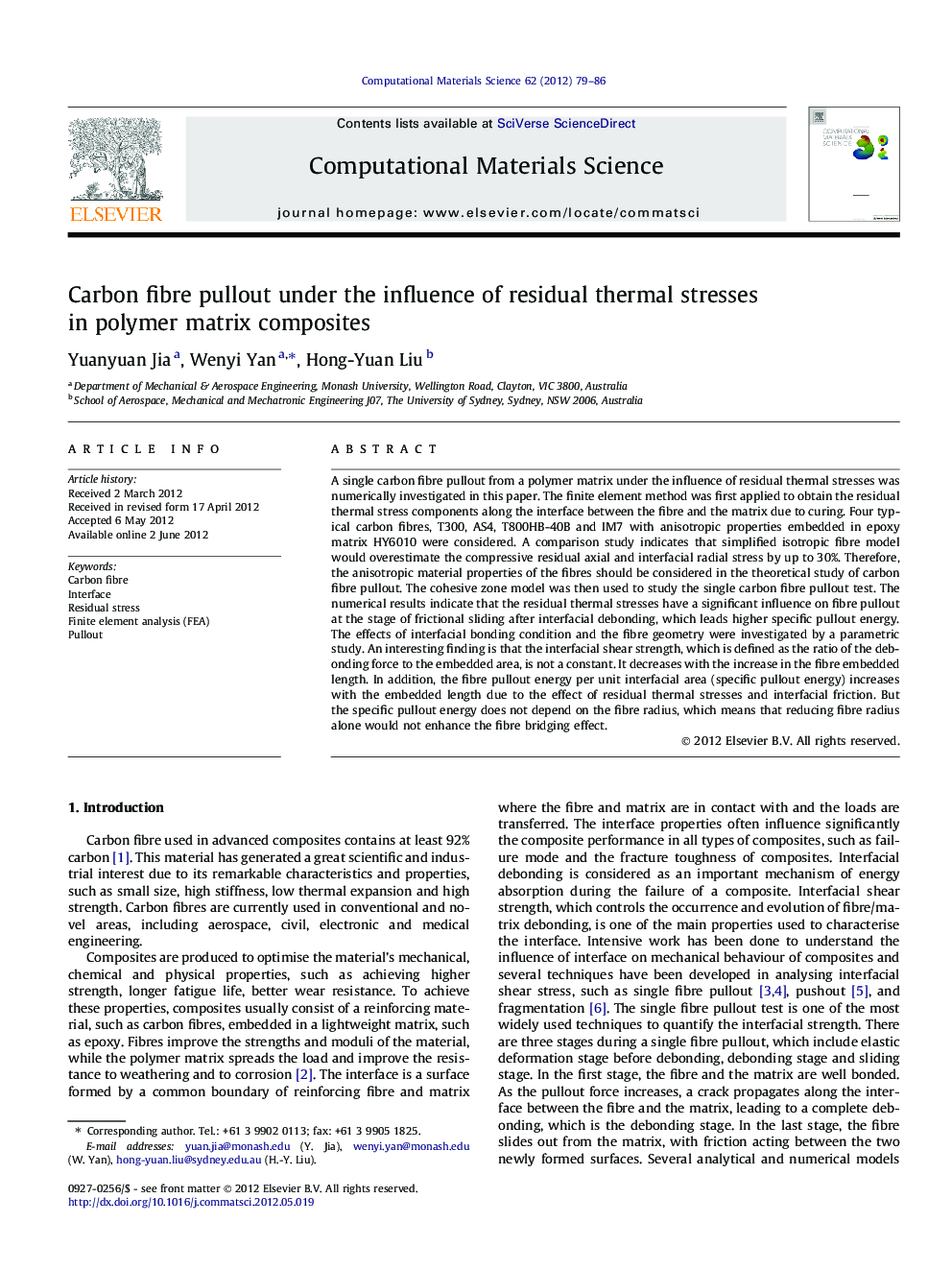| کد مقاله | کد نشریه | سال انتشار | مقاله انگلیسی | نسخه تمام متن |
|---|---|---|---|---|
| 1561515 | 1513947 | 2012 | 8 صفحه PDF | دانلود رایگان |

A single carbon fibre pullout from a polymer matrix under the influence of residual thermal stresses was numerically investigated in this paper. The finite element method was first applied to obtain the residual thermal stress components along the interface between the fibre and the matrix due to curing. Four typical carbon fibres, T300, AS4, T800HB-40B and IM7 with anisotropic properties embedded in epoxy matrix HY6010 were considered. A comparison study indicates that simplified isotropic fibre model would overestimate the compressive residual axial and interfacial radial stress by up to 30%. Therefore, the anisotropic material properties of the fibres should be considered in the theoretical study of carbon fibre pullout. The cohesive zone model was then used to study the single carbon fibre pullout test. The numerical results indicate that the residual thermal stresses have a significant influence on fibre pullout at the stage of frictional sliding after interfacial debonding, which leads higher specific pullout energy. The effects of interfacial bonding condition and the fibre geometry were investigated by a parametric study. An interesting finding is that the interfacial shear strength, which is defined as the ratio of the debonding force to the embedded area, is not a constant. It decreases with the increase in the fibre embedded length. In addition, the fibre pullout energy per unit interfacial area (specific pullout energy) increases with the embedded length due to the effect of residual thermal stresses and interfacial friction. But the specific pullout energy does not depend on the fibre radius, which means that reducing fibre radius alone would not enhance the fibre bridging effect.
► The anisotropic property of carbon fibres has significant effect on thermal residual stresses.
► The residual thermal stress has a significant influence at frictional sliding stage of fibre pullout.
► The interfacial shear strength is not a constant and decreases with the fibre embedded length.
► The specific pullout energy increases with the embedded length.
► The specific pullout energy does not depend on the fibre radius.
Journal: Computational Materials Science - Volume 62, September 2012, Pages 79–86